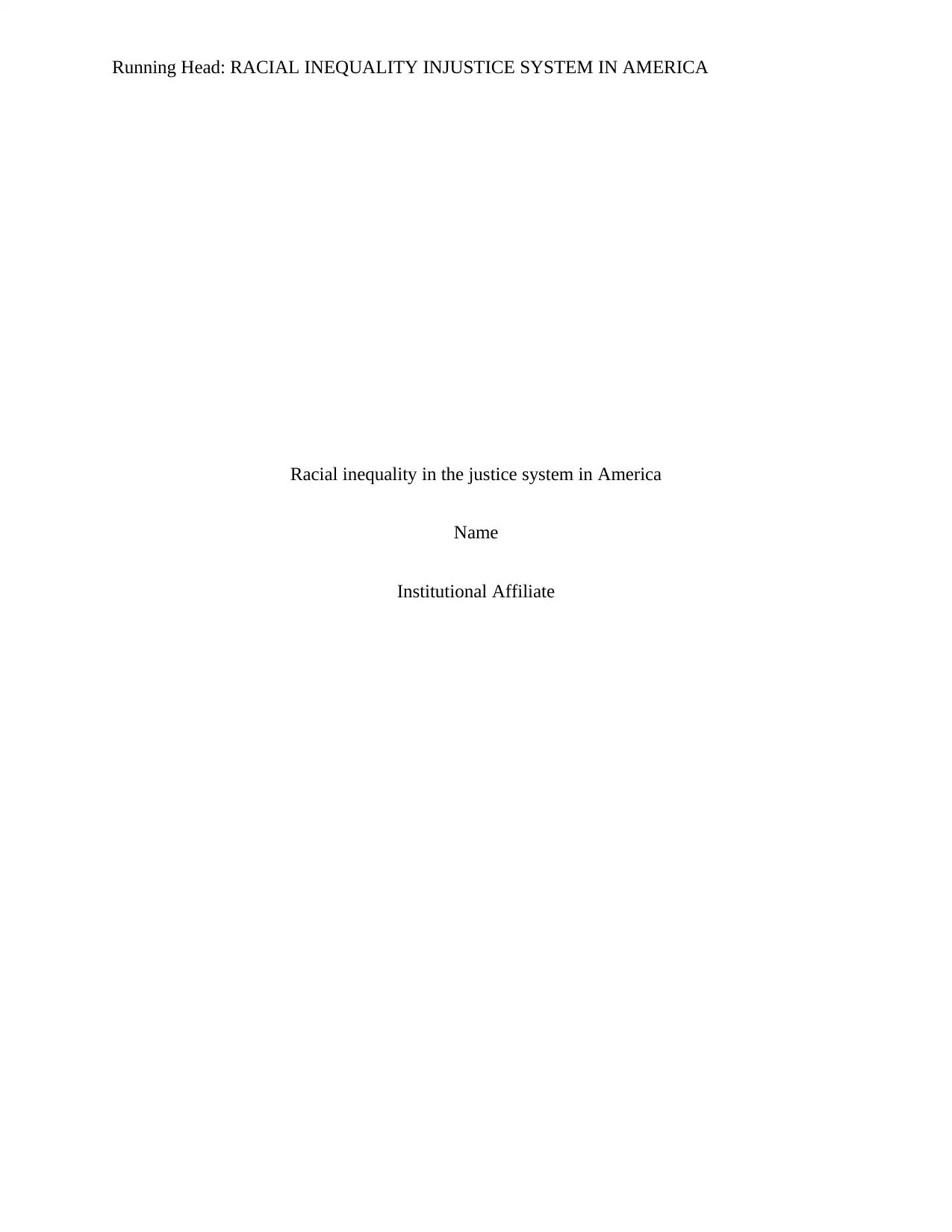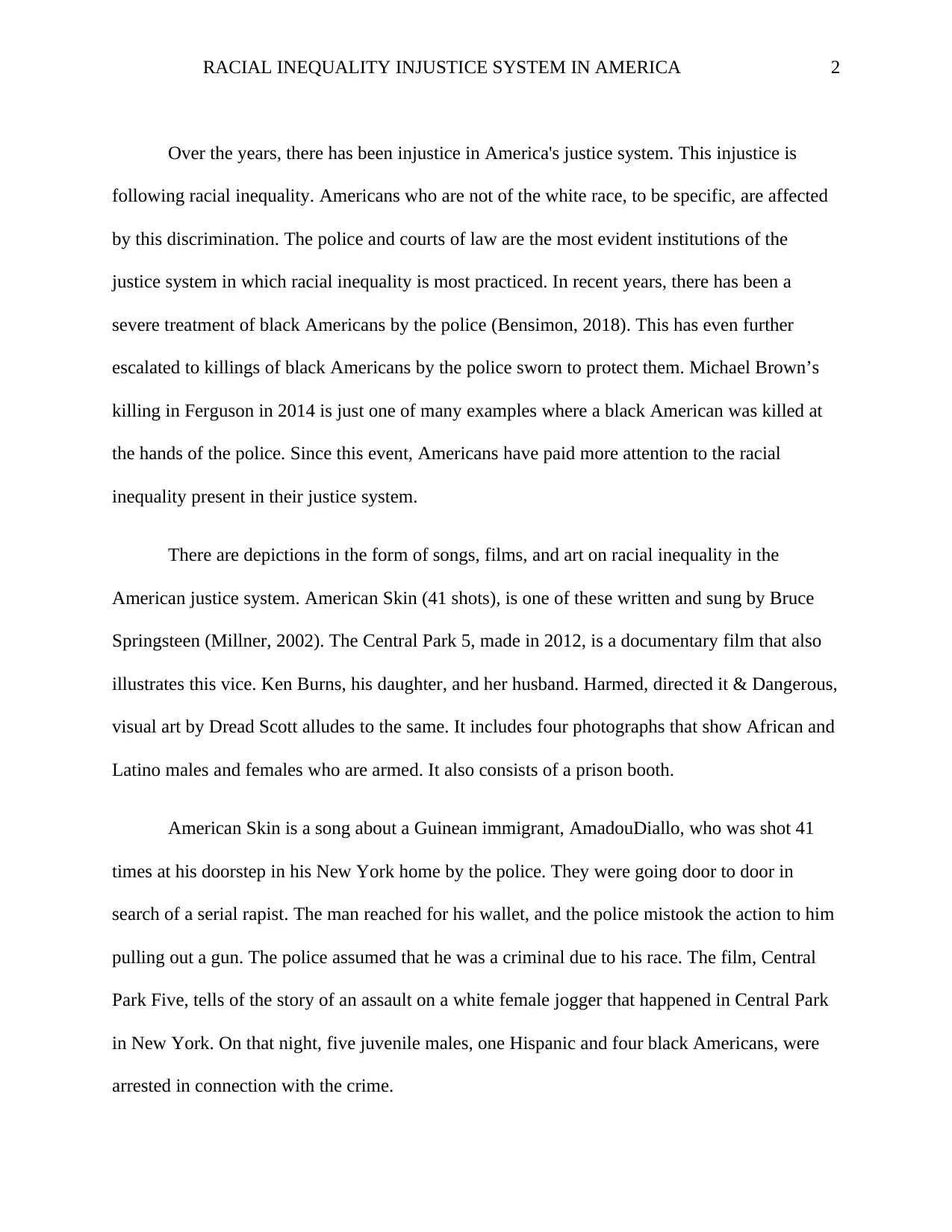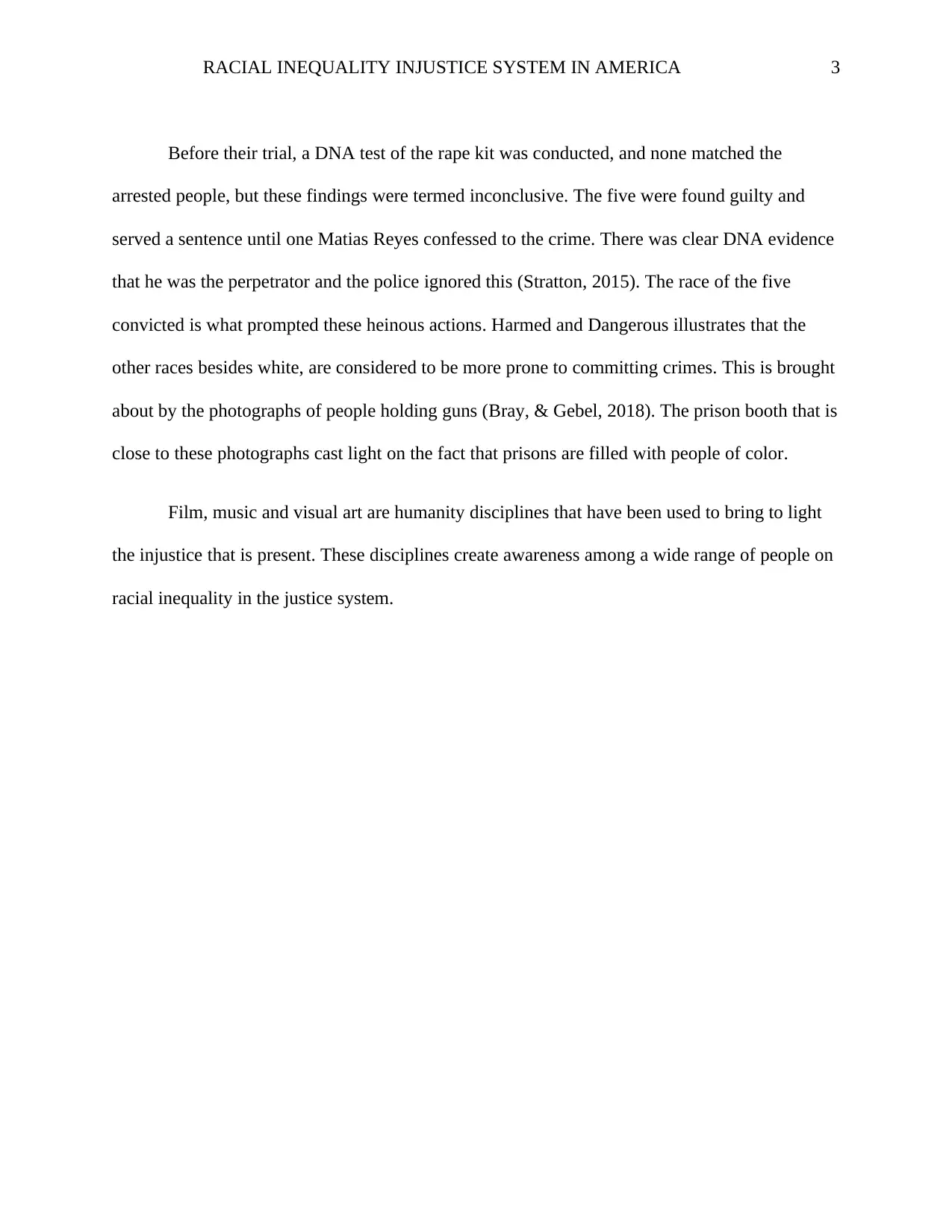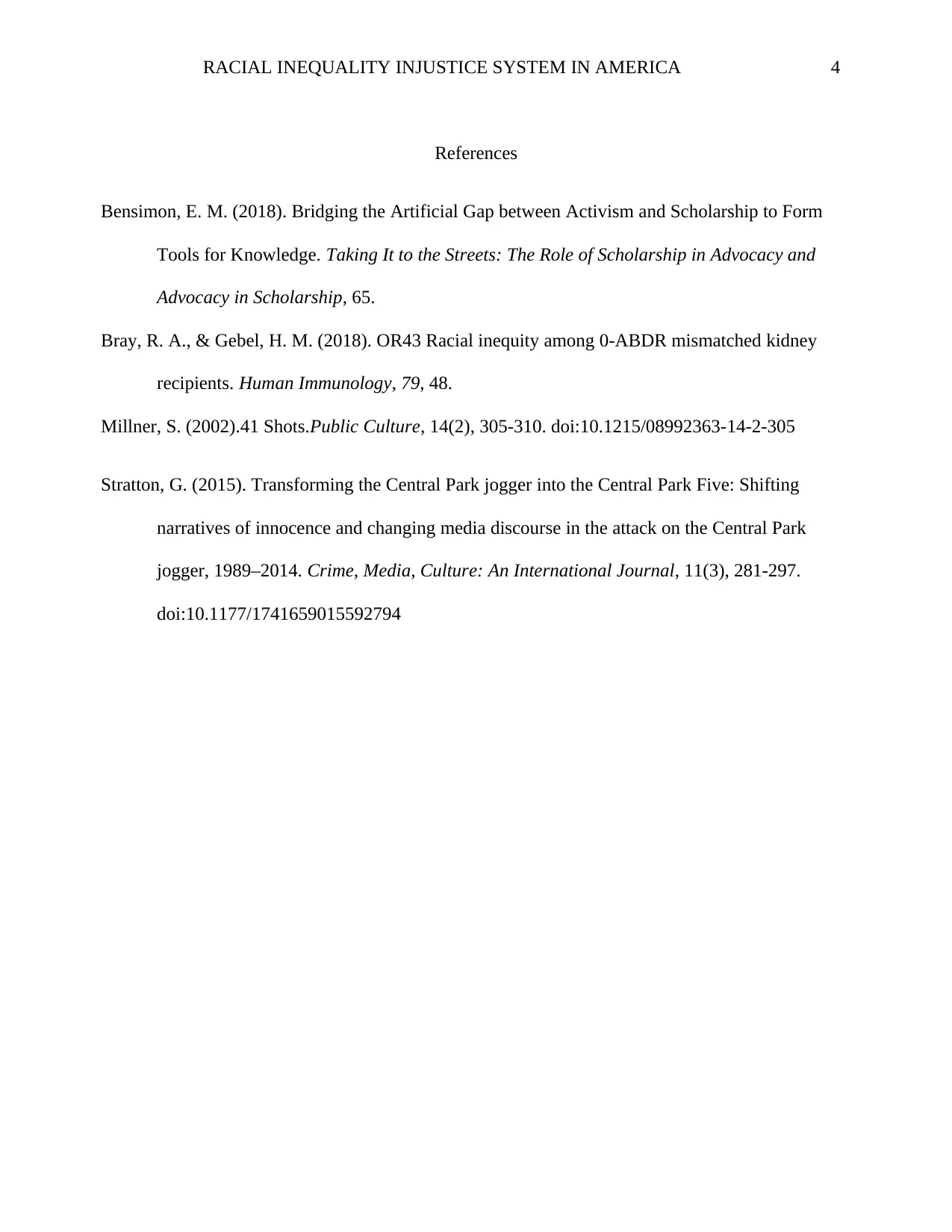Racial Inequality in the Justice System in America
VerifiedAdded on 2023/06/03
|4
|760
|361
AI Summary
This article discusses the racial inequality present in the justice system in America, specifically in the police and courts of law. It also highlights how film, music, and visual art have been used to create awareness on this issue.
Contribute Materials
Your contribution can guide someone’s learning journey. Share your
documents today.
1 out of 4










![[object Object]](/_next/static/media/star-bottom.7253800d.svg)